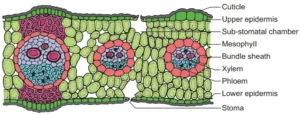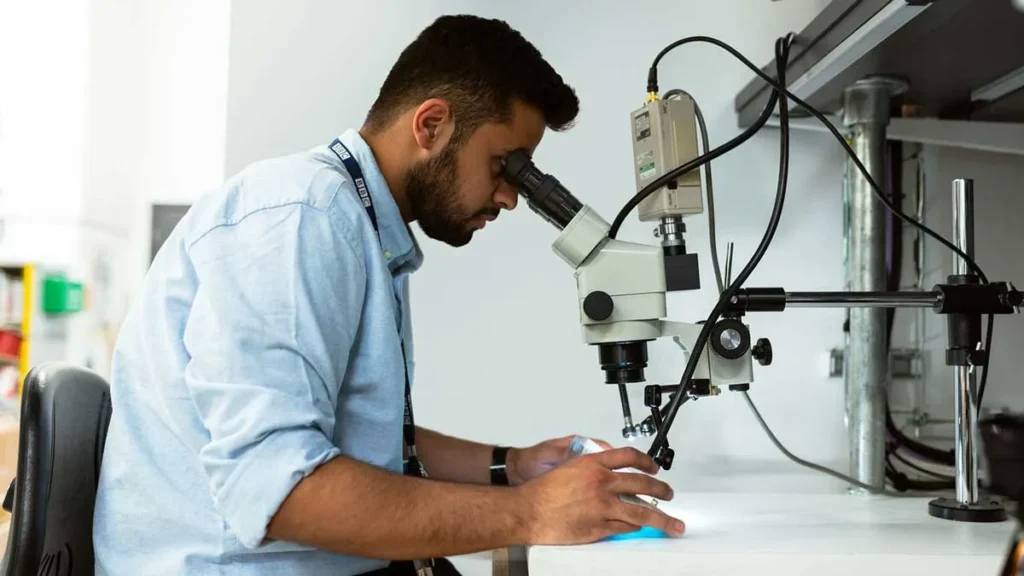Diploid Definition
Diploid is a cell or organism that has paired chromosomes, one from each parent.
- In most organisms, the somatic cells are diploid, whereas the sex cells tend to be haploid.
- The diploid cells have two homologous copies of the two chromosomes obtained from two parents.
- Almost all mammals are considered diploid organisms except for some rats. However, studies discarding the existence of polyploidy in mammals have been done.
- Polyploidy is the condition where a cell has chromosomes that are multiple of diploid chromosome number.
- Most organisms reproducing by mitosis usually have 2n chromosomes forming diploid cells.
- During mitosis, a cell with 2n chromosomes replicates the chromosomes to increase the number to 4n. The cell then eventually divides to form two daughter cells with 2n chromosomes each forming diploid daughter cells.
- Thus, mitosis converses with the chromosome number in all cells. Mitosis division is the main form of growth in all somatic cells.
- The diploid daughter cells formed after mitosis have identical genetic information as the parents.
- Diploid cells are also formed after the fertilization of two haploid cells, thus resulting from fertilized eggs.
- The number of chromosomes differs in different organisms, and the number doesn’t indicate the complexity of the organism. The diploid number of chromosomes in humans is 46 chromosomes, whereas that in the dog is 72 chromosomes.
- Some viruses might also have two copies of their RNA genome in each viral particle, making them diploid particles.
- The viruses with diploid genome are T-lymphocytic virus, Retroviruses, and HIV.
- Within the plant kingdom, some plants have two stages in their lifecycle, resulting in the alternation of generation. The diploid stage of the lifecycle is termed the sporophytic stage.
- The sporophytic stage is the predominant stage in the plants in the group Pteridophyta, which includes plants like ferns.
Haploid Definition
Haploid or monoploid is a cell or organism that has just a single copy of each chromosome.
- Haploid cells have half the number of chromosomes as present in diploid or somatic cells.
- However, sometimes the term ‘haploid’ is also used to indicate the number of chromosomes usually found in gametes.
- In such cases, if the somatic cells are tetraploid, the gametes will have two sets of chromosomes and still be called haploid.
- The nucleus of diploid eukaryotes is only called haploid when it has just one set of chromosomes. Organisms having haploid chromosomes are also called haploid organisms.
- In most eukaryotic organisms, the sex cells or gametes are haploid. This includes the male sex cell, sperm, and the female sex cell, ovum.
- The haploid cells are formed after meiosis division during sexual reproduction. During meiosis division, a diploid cell replicates its chromosomes to form four sets of chromosomes. The cell then divides to form four cells with a single set of chromosomes.
- Sometimes, the haploid eggs develop to form an organism without fertilization like in male wasps, bees, and ants. These organisms thus, develop from unfertilized eggs.
- The haploid stage is essential to maintain a constant number of chromosomes in diploid organisms. The haploid cells then fuse, resulting in diploid cells with two sets of chromosomes.
- In plants and some algae and fungi, the haploid and diploid stage occur one after the other, resulting in the alternation of generation. The haploid stage is called the gametophytic stage.
- In most Bryophyta, though, the gametophytic stage predominates like in the case of mosses. The haploid stage in these organisms lasts for a longer period of time.
Key Differences (Diploid vs Haploid)
| Basis for Comparison | Diploid | Haploid |
| Definition | Diploid is a cell or organism that has paired or two sets of chromosomes, one from each parent. | Haploid or monoploid is a cell or organism that has just a single copy of each chromosome. |
| Cell division | These cells are formed after mitotic cell division. | These cells are formed after meiotic cell division. |
| Number of chromosomes | Because they have two sets of chromosomes, they have double the number of chromosomes as in haploid cells. | Because they have a single set of chromosomes, they have half the number of chromosomes as in diploid cells. |
| Type of cell | Diploid condition is often seen in somatic cells of various vertebrates. | Haploid condition is observed in sex cells or gametes of various vertebrates. |
| Similarity with the parent cells | Diploid cells formed after mitosis are genetically identical to their parent cell. | The haploid cells after meiosis are not genetically identical to their parents due to crossing over. |
| Alternation of generation | The diploid stage of the lifecycle is called the sporophytic stage. | The haploid stage of the lifecycle is called the gametophytic stage. |
| Diploid stage is less predominant than the haploid stage in the life cycle of most bryophyte like mosses. | The haploid stage is more predominant than the diploid stage in the life cycle of most bryophyte like mosses. | |
| The diploid stage is more predominant than the haploid stage in the life cycle of Pteridophyta like a fern. | The haploid stage is less predominant than the diploid stage in the life cycle of most Pteridophyta like a fern. | |
| Type of eggs | Diploid organisms develop from fertilized eggs. | Haploid organisms develop from unfertilized eggs. |
| Number of chromosomes in humans | Diploid cells have 46 chromosomes in humans. | Haploid cells have 23 chromosomes in humans. |
| Importance | Diploid cells are important for the growth and development of organisms. | Haploid cells are important for sexual reproduction and genetic diversity. |
| Organisms | Some diploid organisms include humans, frogs, fishes, and most plants. | Some haploid organisms include male ants, bees, and wasps. |
Examples of Diploid cells
Somatic cells
- Somatic cells are all the cells in the body of organisms except the sex cells or the gametes.
- All the cells except the proliferating cells of the reproductive system are somatic cells.
- Somatic cells are diploid with two sets of chromosomes. These cells divide by mitosis to form new cells with identical chromosomes.
- Out of the two sets of chromosomes, one is inherited from the father while the other comes from the mother.
- However, some organisms might have somatic cells that are tetraploid (four sets of chromosomes) or hexaploid (six sets of chromosomes).
- Somatic cells usually are more prone to spontaneous mutations than their haploid counterparts.
- The nature and content of the cells in humans depend on the type of somatic cells as there are about 220 types of somatic cells in humans.
- The number of chromosomes in the somatic cells of humans is 46 chromosomes.
Examples of Haploid cells
Sex cells/ Gametes
- Gametes or sex cells are reproductive cells in many organisms that reproduce by sexual reproduction.
- These cells have half the number of chromosomes as in the somatic cells and thus are called haploid cells.
- Sex cells are formed after meiosis division of the proliferating cells of the reproductive organs like testes and ovaries.
- The gametes are of two types; male gametes and female gametes where the male gamete carries the paternal set of chromosomes and the female gamete carries the maternal set of chromosomes.
- These cells are important as they help to maintain the constant number of chromosomes in sexually reproducing organisms.
- The number of chromosomes in the sex cells of humans is 23 chromosomes.






